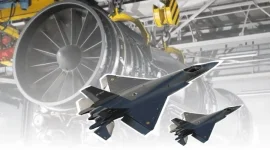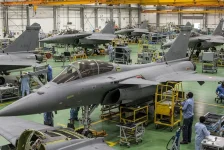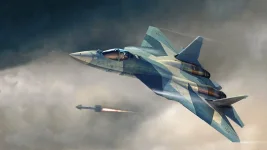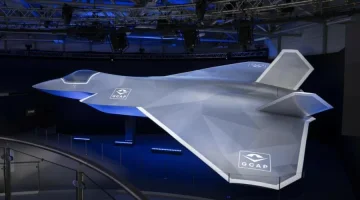- Views: 4K
- Replies: 17
India has laid down strict conditions for the potential acquisition of new Russian fifth-generation jet engines to upgrade its formidable Sukhoi Su-30MKI fleet.
According to official sources, the Indian Ministry of Defence (MoD) and the Indian Air Force (IAF) have communicated to Moscow that any agreement must involve a minimum of 80% Transfer of Technology (ToT), a significant increase over previous arrangements.
Furthermore, India is insisting that Russia conduct the final development testing of its proposed new engine within India.
Russia's state-owned United Engine Corporation (UEC) has presented two engine options for India's consideration.
The first is the AL-41F1S, which currently powers Russia's Su-35 fighter. The second, more advanced option is the "Product 177S," a next-generation engine incorporating technologies from the engine developed for Russia's Su-57 stealth fighter.
These powerplants are being proposed for the comprehensive "Super Sukhoi" upgrade program for India's fleet of over 240 Su-30MKI jets and potentially for India's own fifth-generation stealth fighter, the Advanced Medium Combat Aircraft (AMCA).
While the offer was first tabled during high-level meetings in 2024, the Product 177S engine garnered significant attention from IAF officials at the Aero India 2025 exhibition.
Its advanced specifications promise a substantial performance boost, including a thrust of 18–20 tons, a notable improvement over the 12.5 tons produced by the current AL-31F engine.
The new engine also offers greater fuel efficiency and design elements compatible with stealth technology, making it a key component for a true generational leap in the Su-30MKI's capabilities.
However, the IAF has shown less enthusiasm for the AL-41 engine. Defence sources indicate that this engine provides only "limited operational advantages" over the existing AL-31F. While more powerful, integrating the AL-41 would necessitate costly and extensive modifications to the Su-30MKI's airframe.
This is seen as an inefficient investment, particularly as the fleet is already undergoing a ₹20,000 crore enhancement with Indian-made avionics, the Uttam Active Electronically Scanned Array (AESA) radar, and BrahMos-A supersonic cruise missiles.
The interest in the developmental Product 177S is therefore much higher, but it comes with its own set of challenges. The engine is not yet mature and has not been cleared for serial production, making its performance and reliability unproven.
To address this, India has demanded that Russian engineers be deployed to complete the engine's validation and testing on Indian soil. This move is designed to mitigate developmental risks and ensure the technology is proven effective for Indian requirements before any large-scale commitment is made.
India's insistence on an 80% technology transfer is a cornerstone of its "Aatmanirbhar Bharat" policy in the defence sector.
This demand is informed by past experiences, such as the local manufacturing of the AL-31F engine by Hindustan Aeronautics Limited (HAL) at its Koraput facility, which operates with around 60% ToT. While this has reduced reliance on Moscow, India still needs to import critical components like engine turbine blades.
Achieving a higher level of ToT for the Product 177S would allow HAL to master cutting-edge engine technologies vital for the AMCA program and future indigenous aircraft projects.
The outcome of these negotiations may be influenced by the current geopolitical landscape. With its relations strained with Western nations, Russia may be more willing to agree to India's stringent technology-sharing demands to secure a major defence contract.
Simultaneously, India's growing defence partnership with the United States, highlighted by the recent agreement to co-produce GE F414 engines in India, gives New Delhi significant leverage.
The final decision now rests on Russia's willingness to meet India's firm conditions for what could be one of the world's largest fighter upgrade programs.




